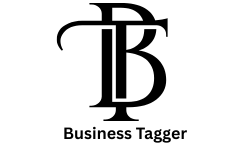Protocolo Operacional Padrao (POP): Backbone of Efficient Business Operations

Standard Operating Procedure: The Backbone of Efficient Business Operations
In a world where speed and structure define success, businesses can no longer afford to rely on improvisation. That’s where the Protocolo Operacional Padrao (POP) or Standard Operating Procedure (SOP) proves its worth. POP is more than a procedural document; it’s a framework that empowers teams to perform consistently, efficiently, and with confidence.
Whether you’re running a hospital ward, an industrial production line, or a customer service center, POPs lay out the “how” behind every task. It ensures every operation is perform every time with the same excellence, from the most routine to the most extreme.
Table of contents
What Is a Protocolo Operacional Padrão?
A Protocolo Operacional Padrao (POP) is a standard set of instructions that tells how to do specific tasks or processes on the level of the whole organization. Its goal is simple. the prevention of ambiguity and establishment of a repeatable, reliable method of operation.
Think of a POP as the manual by which your business runs its day-to-day routine. This eliminates discrepancies and adds a layer of accountability, training, and quality assurance.
Why POP is Very Important in a Modern Business
In today’s high-speed, high-stakes business world, every second counts. Unclear instructions can lead to lost time and resources. Duplication of efforts wastes time and adds to any reasonable costs. Mistakes, of course, lead to delays, losses, and reputation damage. POPs contain the structure and certainty – the two pillars every efficient organization needs.
That said, POPs aren’t just nets for catching falls; they lay the foundation for growth. When companies reach a certain size, they can no longer depend on institutional memory or some ad hoc instructions.
- Some primary benefits include:
- Enhanced productivity and efficiency
- Consistent quality control
- Reduced time in onboarding and training
- Operational risk reduction
- Regulatory compliance and easier audits
What Makes a Strong POP?
Not all protocols are equal, and a strong POP is distinct in its precision, practicality, and custom fit for the business. It is clear and accessible in language and capture real-world practices, not just theory.
Although formats vary depending on the industry, the most common components in most POPs include the following:
- Title and Objective: What the protocol is and what it aims to achieve
- Scope: when the POP should be applied
- Responsibilities: Who is involved in the process
- Materials/Resources Required: Tools, documents, or technologies needed
- Step-by-Step Instructions: A clear, chronological guide to execution
- Safety or Compliance Notes: Legal or regulatory requirements, where applicable
- Review and Approval: Record of who created and authorized the protocol
An effective POP will never be static; it evolves as the company grows by taking in recommendations from employees and adapting to changes, be they technological or regulatory.
POP Across Different Industries
It is truly versatile. From high-stake settings such as healthcare and aviation, down to customer-facing industries such as retail and hospitality,Protocolo Operacional Padrao provide a consistent foundation.
In terms of manufacturing, a POP could describe the machine calibration step or those steps within an assembly line to guarantee safety and uniformity.
The POP might refer to deployment protocols, server maintenance, or security updates, which is known points of failure if even the smallest error occurs in these areas.
The service sector a Protocolo Operacional Padrao ensures that customer interactions are standardized, guaranteeing a consistent experience that builds confidence and loyalty to a brand.
Steps to Create and Implement a POP
Introducing Protocolo Operacional Padrao into your organization need not be such a Herculean task. It just requires a methodical approach and the involvement of people who will use the protocols.
- Identify the Need
The most repetitive or error-prone tasks need to be charted for making a better POP. - Observe and Document
Know how it’s done now. Listen to the employees and ask for their input and document the detailed steps. - Standardized Version of Best
Choose the best method that is most efficient, safe, and compliant. Then write it in clear, jargon-free language. - Review and Test
Have it reviewed by both management and frontline staff. A protocol will only work if it makes sense from the standpoint of those who will be following it. - Train and Communicate
Distribute the POP and train your team. Explain the purpose behind it, and encourage feedback for continuous improvement. - Monitor and Update
Periodic reviews will ensure that the document remains relevant. Business needs change, and so should your protocols.
Challenges and Solutions
Though POPs offer several benefits, they are also often accompanied by a lot of resistance, especially in organizations where habits have become ingrained. Change-management interventions are needed because the employees should also understand why Protocolo Operacional Padrao should be followed, not just how.
Keeping protocols updated is another challenge. A stale binder of old procedures will do as much good as not having standards at all. Each POP should be assigned an owner in the department or person responsible for periodic review and updating.
The other strategic move is to digitize your POPs. Cloud-based systems or knowledge management platforms make it easy to access, search, and edit protocols in real time.
POP as a Competitive Advantage
POP companies tend to be more productive than companies that are not Protocolo Operacional Padrao oriented because there is less employee turnover, and customer satisfaction levels are impressive. That is because standardized processes eliminate confusion, clarify things, and lighten the load of micromanagement.
A business that runs by clear, repeatable systems becomes truly agile.
When your business runs on clear, repeatable systems, it becomes more agile. You can scale faster, onboard staff with ease, and respond to market demands without losing quality. In this way, POPs do more than optimize workflows they lay the foundation for long-term success.
Conclusion
The Protocolo Operacional Padrão (POP) is more than just documentation it’s a mindset shift toward operational excellence. By defining how tasks executed, businesses remove ambiguity and empower employees with confidence and clarity. Whether you’re a startup aiming to scale or an established enterprise streamlining your workflow, implementing POPs is one of the smartest moves you can make. When done right, these protocols become an invisible engine behind your organization’s consistency, growth, and long-term success.
FAQs
1.What is a Protocolo Operacional Padrão in simple terms?
It’s a detailed document that explains how to do a specific task in a standardized way. It helps ensure consistency and quality.
Is a POP only useful in large companies?
Not at all. Small businesses can benefit even more from POPs by reducing confusion, training new staff quickly, and delivering consistent results.
How often should POPs be updated?
Best practice is to review them every 6 to 12 months, or whenever there’s a major change in process, technology, or compliance.
Can software help manage POPs?
Yes. Many businesses use document management systems or workflow tools to store, update, and share POPs easily across teams.





